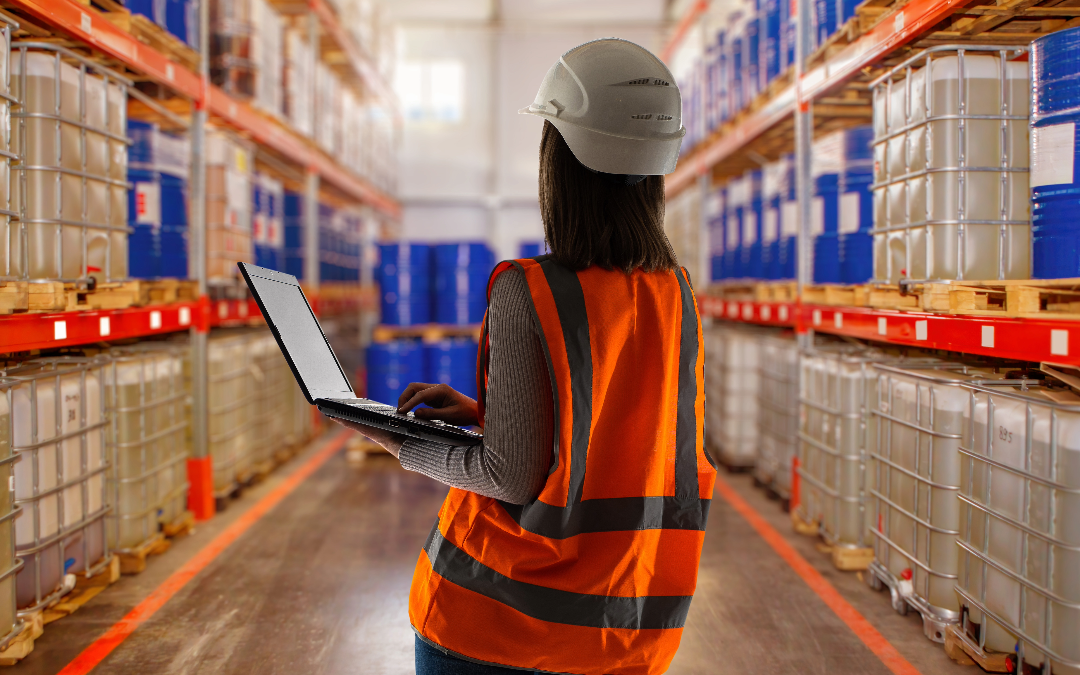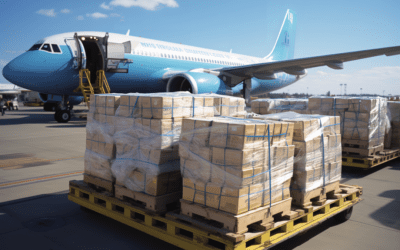The hazardous chemicals industry plays a vital role in modern society, providing essential materials for various sectors, from pharmaceuticals to manufacturing. However, the production and transportation of hazardous chemicals come with inherent risks that demand meticulous planning, cutting-edge equipment, and stringent safety measures. In this blog, we will delve into the hazardous chemicals industry, discussing the equipment needed for handling various types of chemicals, exploring the manufacturing facility density in the United States, and taking a look at the outlook for 2024.
Article Overview
The Hazardous Chemicals Industry
According to the American Chemical Council, “The performance of the US chemical industry is likely to disappoint over the next 2 years. Output will fall by 1.6% in 2023, followed by modest growth of 1.2% in 2024, according to a midyear outlook report from the American Chemistry Council (ACC), a trade association.”
According to the same report, a significant majority, precisely over 85%, of the chemical production within the United States finds its primary consumption base within the industrial sector. However, the forecast for industrial production suggests a continued state of weakness. The American Chemistry Council (ACC) anticipates an overall decline in industrial production by 0.6% for the current year.
A notable example highlighted by the ACC pertains to the sales of light vehicles within the United States. These vehicles, each comprising chemical components valued at more than $4,000, are expected to face some dampening effects due to elevated borrowing costs. Nonetheless, the group does maintain an expectation for an increase in vehicle production.
Additionally, the housing market, which stands as another significant consumer of chemicals, is facing headwinds in the form of high-interest rates following a string of robust years. The ACC anticipates a drop in new home construction, projecting figures to decrease from 1.55 million in 2022 to 1.32 million in the current year.

Unique Challenges and Demands
With an uptick in output in 2024, it’s important to understand the transportation demands of hazardous chemicals. The hazardous chemicals industry encompasses a broad range of substances, from corrosive acids to flammable gases, each posing unique challenges in production, storage, and transportation. These chemicals are essential for many industries, but their inherent hazards demand strict regulations and safety protocols. So, what precisely do you need in terms of equipment to safely handle these chemicals?
Equipment for Hazardous Chemical Handling
- Chemical Storage Tanks:
Chemical storage tanks are designed to store hazardous substances safely. These tanks come in various materials like steel, fiberglass, or polyethylene, depending on the chemical’s corrosiveness. Proper ventilation and secondary containment systems are crucial to prevent leaks and spills.
- Chemical Pumps and Transfer Systems:
Designers create chemical pumps and transfer systems to precisely and safely move chemicals from one location to another. Manufacturers often use materials resistant to chemical corrosion in constructing these pumps.
- Personal Protective Equipment (PPE):
PPE, including gloves, goggles, chemical-resistant clothing, and respirators, is essential for the safety of personnel working with hazardous chemicals. Employers must supply suitable PPE and must ensure they train employees in its use.
- Chemical Ventilation Systems:
Adequate ventilation systems are crucial to remove fumes and prevent the buildup of hazardous gases in enclosed spaces. These systems help maintain a safe working environment.
- Safety Cabinets:
Safety cabinets are used for storing smaller quantities of hazardous chemicals, providing additional protection in case of leakage or fire. They are designed to contain and prevent the spread of hazardous materials.
- Emergency Response Equipment:
Facilities must have emergency response equipment, including eyewash stations, safety showers, and spill containment kits, readily available to mitigate accidents. All emergency equipment must meet strict regulations.
Manufacturing Facility Density in the United States
In the United States, making dangerous chemicals is an important part of the industry. Some states have more chemical factories than others because of good rules and being in the right place. Places like Texas and Louisiana, on the Gulf Coast, have many chemical factories because they’re close to big ports and have the things needed to make chemicals. But all over the country, there are factories that make chemicals to help everyone nearby and in the whole country.
The concentration of chemical manufacturing facilities in certain regions raises concerns about safety and environmental risks. Communities near these facilities often face increased exposure to potential hazards. As a result, regulatory agencies like the Environmental Protection Agency (EPA) closely monitor these facilities and impose stringent safety regulations.
Additionally, facilities that are in more remote areas pose a risk to the carriers that are moving the hazardous materials to and from the location. A lack of immediate resources can pose an issue for personnel safety and cleanup if there is an incident.

Future Outlook in 2024
As we look ahead to 2024, several key trends and factors will shape the hazardous chemicals industry:
- Sustainability and Environmental Concerns:
The industry will continue to face pressure to reduce its environmental footprint. Manufacturers will invest in cleaner and more sustainable production methods, including green chemistry practices and waste reduction.
- Advancements in Safety Technology:
Rapid advancements in technology, such as real-time monitoring systems and predictive analytics, will enhance safety protocols and help prevent accidents and leaks.
- Supply Chain Resilience:
The industry will prioritize supply chain resilience, especially in the wake of disruptions caused by the COVID-19 pandemic. Companies will invest in redundancy and diversification to ensure a consistent supply of critical chemicals.
- Regulatory Compliance:
Authorities will continue to impose stricter regulations to ensure the safe production, storage, and transportation of hazardous chemicals. Companies will need to stay updated on changing regulations and invest in compliance measures.
- Global Market Expansion:
The global demand for hazardous chemicals will continue to grow, driven by various industries, including healthcare, electronics, and automotive. U.S. chemical manufacturers will expand their reach into international markets.
KCH Transportation: Ensuring Safe Chemical Transportation
In the hazardous chemicals industry, safe transportation is paramount. KCH Transportation is a leading player in providing comprehensive transportation services for hazardous chemicals. Their services align with the industry’s evolving needs and safety requirements. KCH Transportation specializes in transporting hazardous and non-hazardous chemicals safely and efficiently.
For bulk chemical shipments, KCH Transportation offers a wide network of fleets, including truck and rail options, designed for optimal safety and efficiency. We work with fleets using the latest technology to monitor and control the transportation process each step of the way.
With a nationwide network, KCH Transportation can meet the transportation needs of chemical manufacturers and distributors across the United States.
Looking Ahead
The hazardous chemicals industry is a vital component of modern society, supplying essential materials for various sectors. However, the inherent risks associated with the production and transportation of these chemicals require strict safety measures and advanced equipment. As we move into 2024, the industry will continue to evolve, prioritizing sustainability, safety, and compliance.
KCH Transportation stands as a key player in ensuring the safe transportation of hazardous chemicals, providing dedicated services tailored to the industry’s needs. As a trusted partner for chemical manufacturers and distributors across the United States, we plan to continue contributing to the industry’s growth and sustainability.






